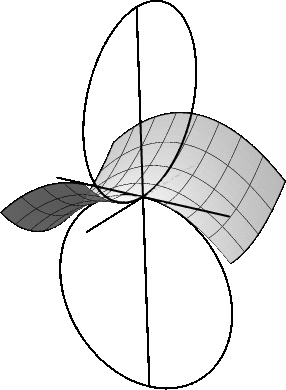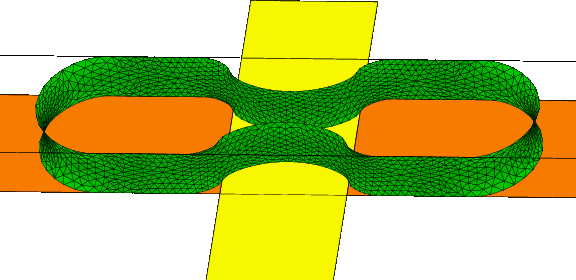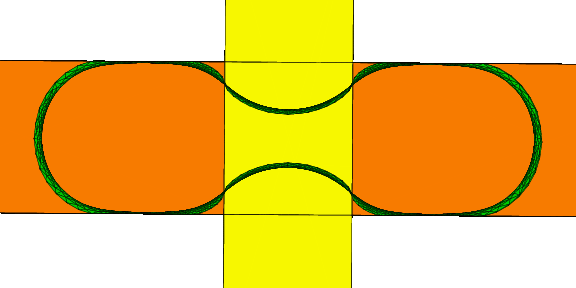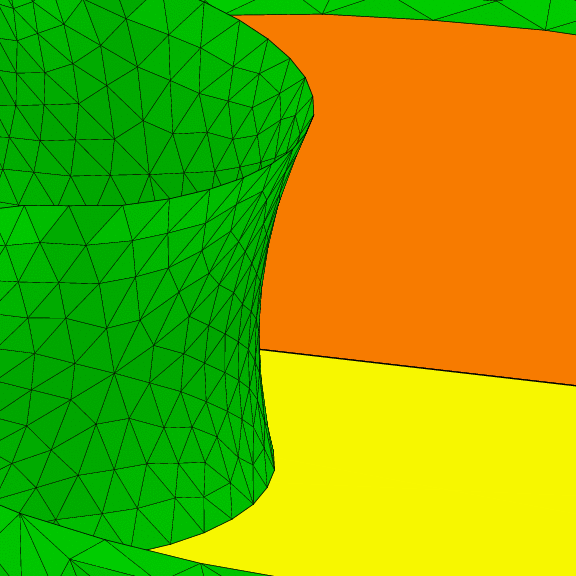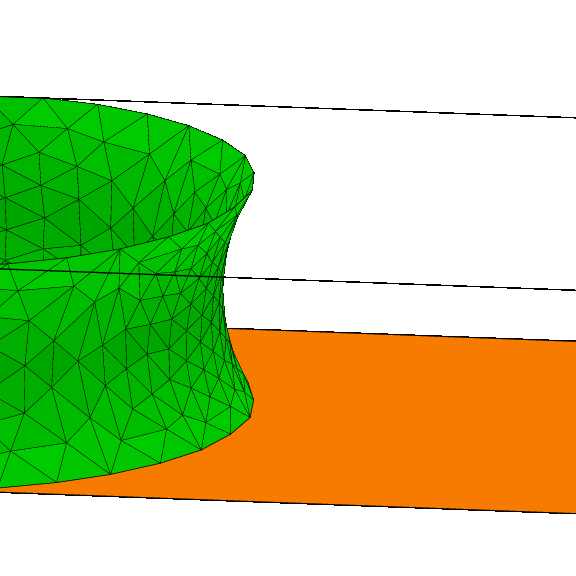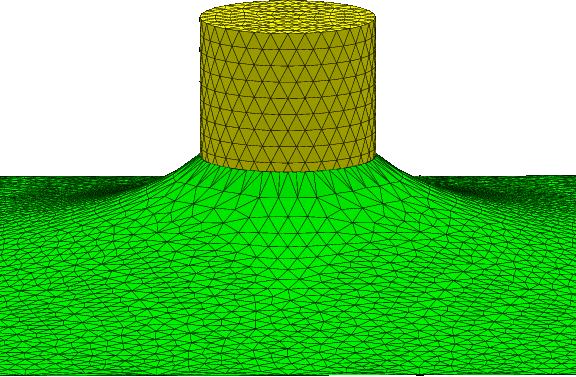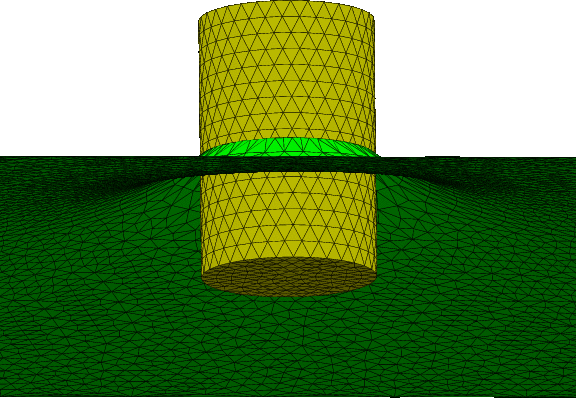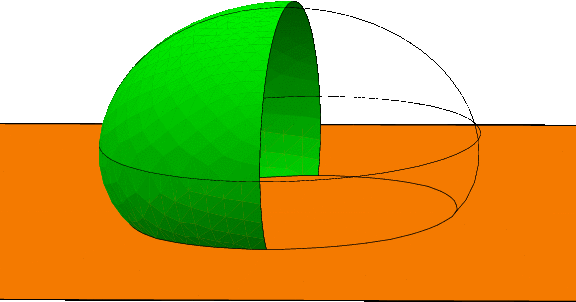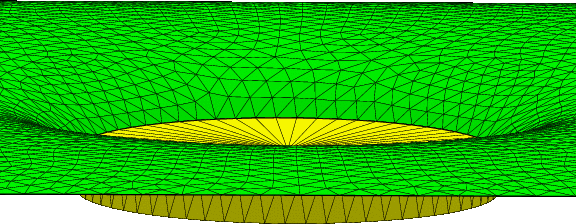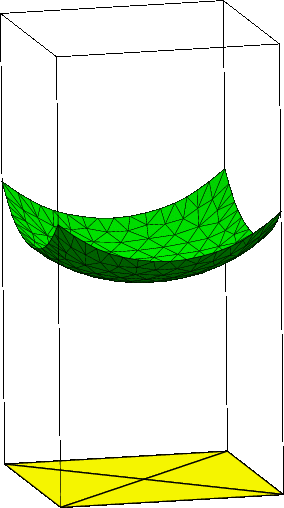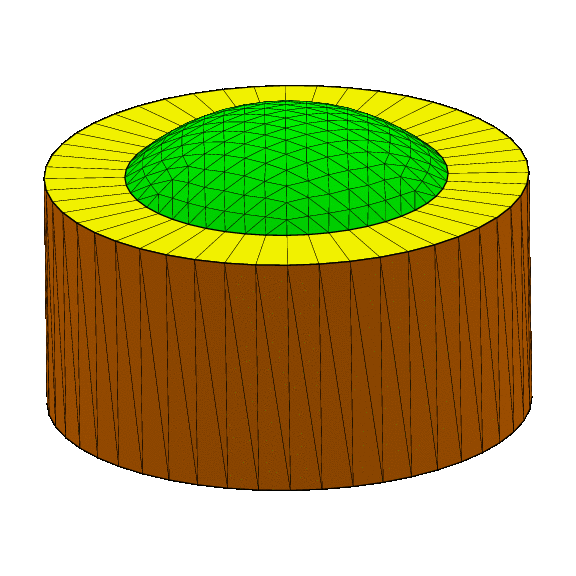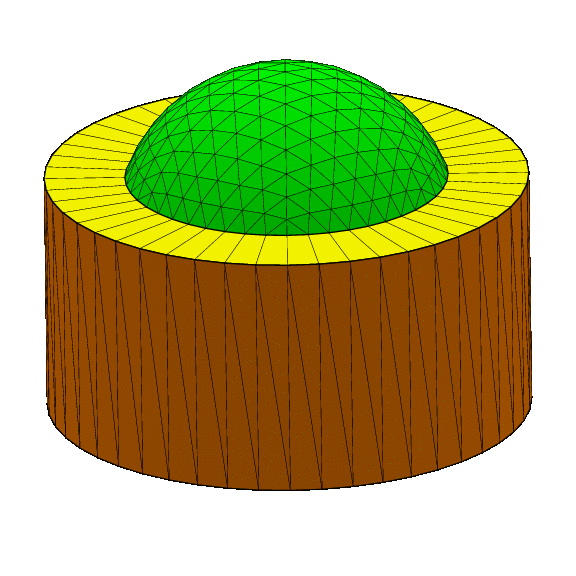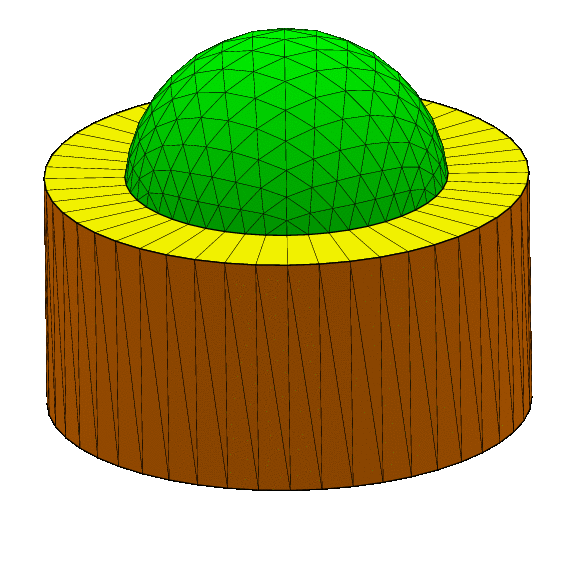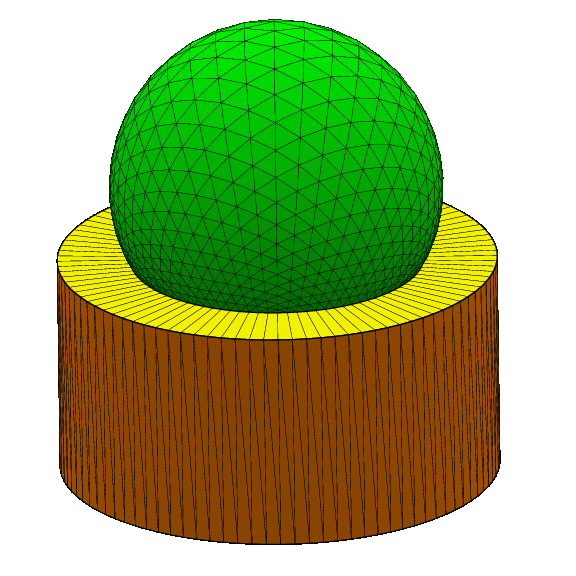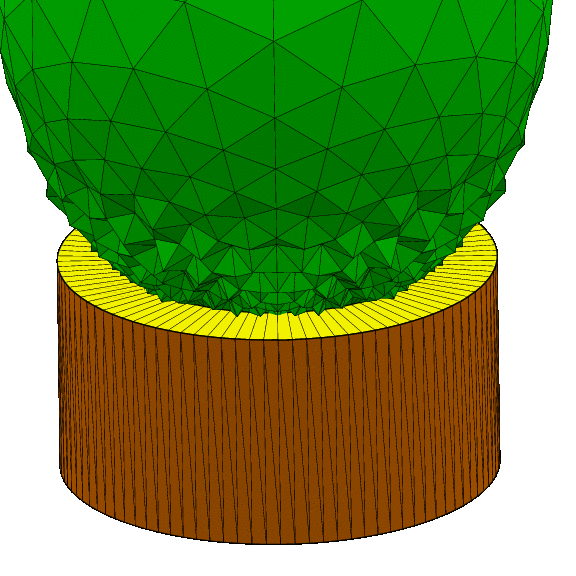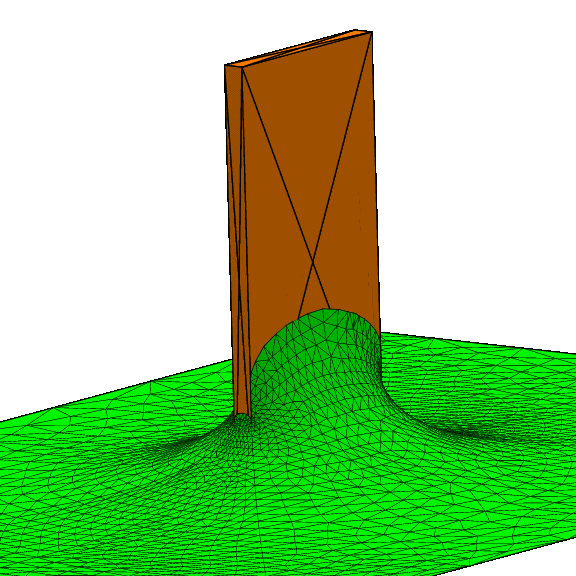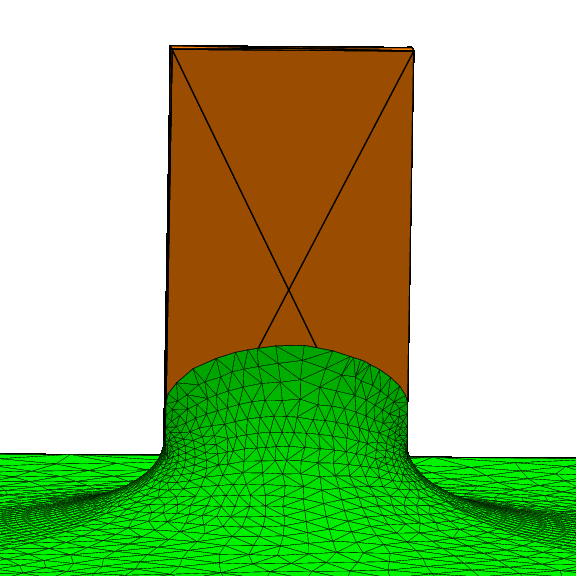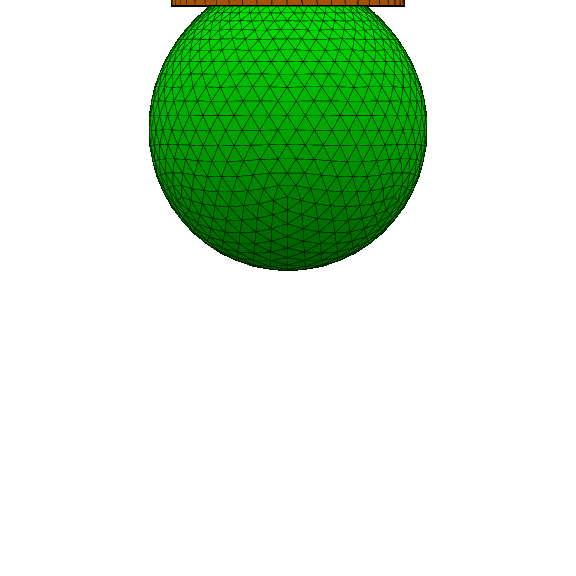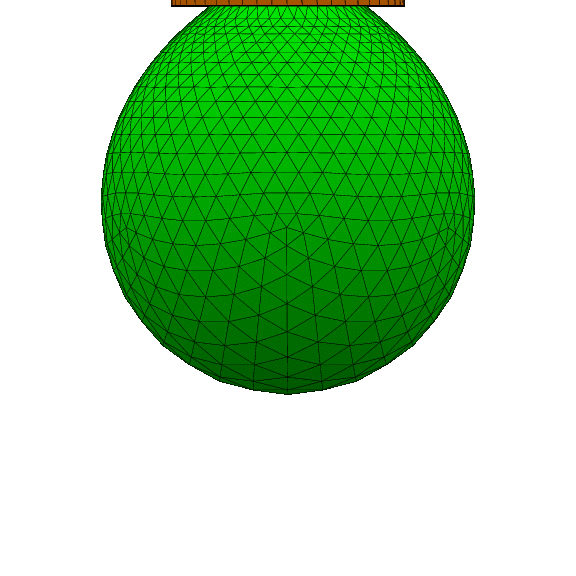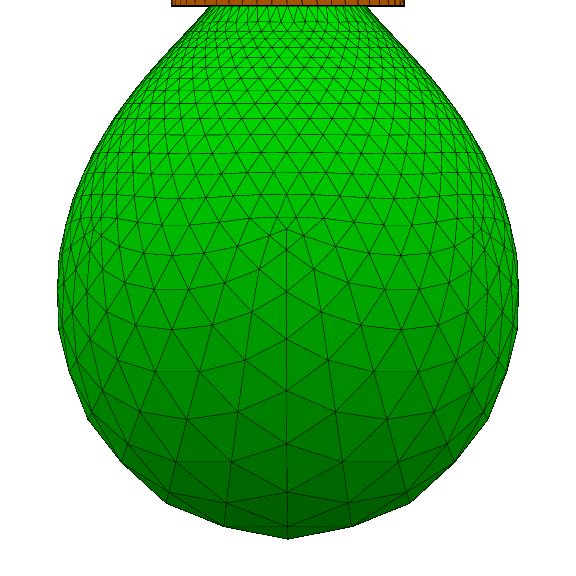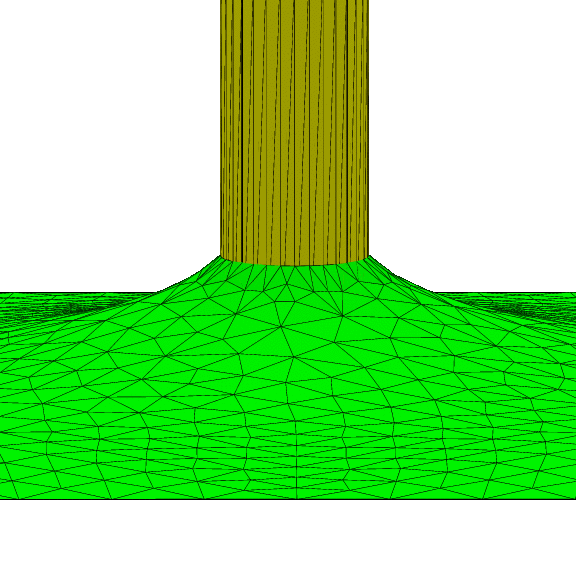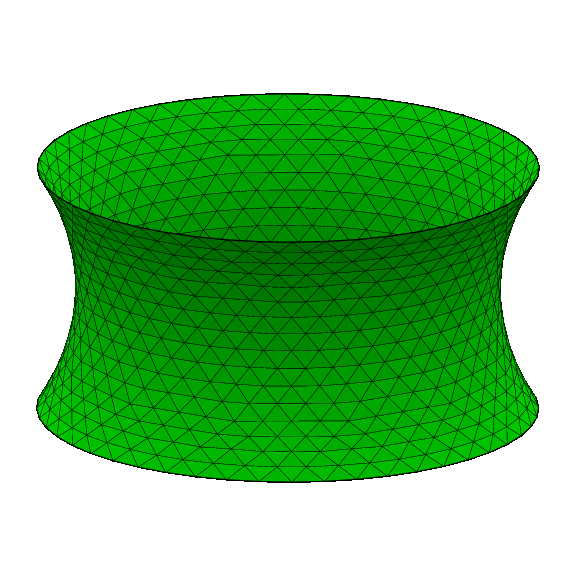The Physics of Microdroplets

This page contains Evolver datafiles for Chapter 1 images. The data files contain evolution scripts (always named "gogo") and scripts for producing EPS files for the book images (always named "run"). The datafiles for this chapter also have scripts (named "run3D" for producing 3D U3D files, which can be used to create 3D PDF files; the scripts also create all the auxiliary files needed and compile a LaTeX wrapper into a viewable 3D PDF file.
The image scripts set the viewing angle with the "view_matrix := ..." command. The particular view matrix used was generated by moving the surface by mouse by hand and then printing out the view matrix with the "print view_matrix" command, and cutting and pasting the result into the command.
- Fig. 1-14 Sectional curvatures of a surface.
- Fig. 1-23 Two droplets linked by precursor film.
- Fig. 1-24 Droplet pinched by a hydrophobic surface.
- Fig. 1-27 Vertical wire dipped into a fluid.
- Fig. 1-35 Drop flattened by gravity.
- Fig. 1-45 Drop in interface between liquids.
- Fig. 1-52b Coin suspended by surface tension.
- Fig. 1-66 Capillary rise in a square well.
- Fig. 1-68 Inflating spherical cap.
- Fig. 1-69 Exploding spherical cap.
- Fig. 1-70 Capillary rise on a Wilhelmy plate.
- Fig. 1-73 Suspended droplet.
- Fig. 1-82 Capillary rise around cylindrical rod.
- Fig. 1-83 Catenoid soap film.
Get Surface Evolver
Back to book home page.
